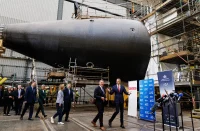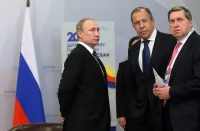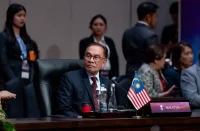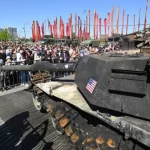The Islamic Republic of Pakistan is steadily changing its policies – both domestic and foreign. Outside observers are putting the change down to democratic transition and an Asian-style populism. This is partially justified, since the recent parliamentary elections were relatively transparent and the winner – the current prime minister, Imran Khan – opted for combating corruption, improving the well-being of all segments of the population, and pragmatism in his pre-election campaign.
On 9 December, he announced a new roadmap for the country’s economic development over the next six to nine months. The key points of the programme are a friendly climate for foreign investors, a reduction in the gap between the import and export of goods, and a way out of the prolonged economic crisis that has devalued the Pakistani rupee.
As for the main aspects of the country’s foreign policy, there are a few of them and they are interrelated.
The status of Kashmir continues to be an important foreign policy issue for Pakistan. According to Dr Syed Nazir Gilani, Secretary General of the Jammu and Kashmir Council for Human Rights, a report on the situation published by the UN High Commissioner for Human Rights in June 2018 shows that the UN has considerable interest in the Kashmir issue, namely the violation of human rights by Indian security forces over the last 40 years. The most noteworthy information in the report is the number of Indian armed forces in the region – between 500,000 and 700,000 – making Kashmir one of the most militarised zones in the world.
India continues to be regarded as the most dangerous regional rival, especially given the number of defence and dual-use technology contracts between both India and the US, and India and Israel. Islamabad believes that Washington is interested in a close partnership with New Delhi, since the White House would be able to use India to indirectly influence both Pakistan and China. Or at least send certain signals.
Yet the Pakistani government is taking steps to normalise relations with its eastern neighbour. At the end of November, construction work began on the Kartarpur corridor, which will allow Sikhs living in India unhindered, visa-free access to the second holiest place in their religion (the first is the Golden Temple in Amritsar, which is also in India but located far from the country’s border with Pakistan). Even India has noted that the new corridor will help resolve contentious issues between the two countries.
Afghanistan is another problem area. Chronic instability and insurgency in the country has led to an enormous influx of refugees into Pakistan and the need for careful control of the Afghanistan–Pakistan border, which is 2,670 km long (equal in length to the entire EU) and passes straight through the middle of populated areas in some places (since the British didn’t take ethnic factors into account when demarcating the border, the Durand Line cut the Pashtun people in two) and through remote mountainous regions in others, with paths that could be used by potential intruders. These could include both smugglers and radical Islamists interested in recruiting young Pakistanis or organising terrorist attacks.
Yet the Afghanistan issue must, first and foremost, be resolved internally, which means that the Taliban and the government must reach a degree of consensus. Supporting the negotiation process, which also involves Russia, is therefore a priority for Pakistani politicians. The views of Moscow and Islamabad are virtually identical – there is no military solution to the Afghan crisis.
On 15 December, Pakistan’s foreign minister, Shah Mehmood Qureshi, visited Afghanistan, where he took part in talks to settle the conflict.
The Pakistani foreign minister also gave a speech at the UN.
And when US President Donald Trump sent a letter to Pakistan’s prime minister asking for help to settle the conflict in Afghanistan, Pakistan regarded it not as an example of Trump’s unpredictability, since he had previously threatened Islamabad with sanctions, but as an example of Washington’s weakness and a confirmation of Pakistan’s importance in the region.
The White House followed up the request by sending its Special Representative for Afghanistan Reconciliation, Zalmay Khalilzad, to Pakistan, where he held talks on specific steps.
Commenting on how Pakistan will proceed given the change in the US president’s behaviour, Imran Khan noted that he does not want his country to be “treated like a hired gun — given money to fight someone else’s war”. His statement has become a kind of meme in Pakistani society, where there is a growing awareness that friendship with Washington often comes with unpleasant surprises.

The situation with China is quite different. It has been supporting Pakistan since the 1990s, including with the transfer of arms and dual-use technologies, and continues to invest heavily in the country. The China–Pakistan Economic Corridor (CPEC), which links Gwadar Port (operator – the People’s Republic of China) with Kashgar in China’s Xinjiang-Uygur Autonomous Region, could be called the building project of the century. Among other things, the CPEC will completely modernise Pakistan’s transport infrastructure. Following Imran Khan’s visit to Saudi Arabia, the kingdom also confirmed its willingness to invest in the project. The corridor itself is being referred to in Pakistan as a “game changer”. Hence the increased level of interest from other countries.
The project is causing a certain amount of unease in another of Pakistan’s neighbours, however – the Islamic Republic of Iran. Since the Saudis are Tehran’s main geopolitical competitors, anything Riyadh does in Pakistan is viewed by the Iranians as a possible challenge. Given that Iran is working with India to develop Chabahar Port on the Gulf of Oman and export oil there, the Iranians are also not happy about the further expansion of Gwadar Port. Added to this is the issue of Baluchi separatism, but this affects both Iran and Pakistan equally. Islamabad previously adopted a balanced policy with regard to Iran, Saudi Arabia and other countries in the Middle East, however, and it is unlikely that the new government will deliberately rock the boat.
Russia also occupies a special place in Pakistan’s new policy. Although defence and security cooperation has advanced considerably, clear priority is given to India in Moscow’s foreign policy regarding South Asia. This can be seen in both the main strategic documents on foreign policy (including economic development) and security, and in their practical implementation. But considering Pakistan’s location (the geopolitical Rimland that is the coastal belt of Southern Eurasia), its growing importance as a transport hub thanks to the CPEC, its enormous resource potential, and the rational, pragmatic policies that Islamabad has been demonstrating recently, the Russian government should increase its involvement in all possible joint projects and suggest alternative options to Pakistan that have been tried and tested over many years of experience.














You can’t trust Pakistan because you never know which Pakistan you are dealing with.
Pakistan has dodged the COVID Bazooka and in the COVID Doom, Pakistan has demonstrated the resilience of its supply chain and manufacturing excellence. Manufacturing is OBSOLETE,in the EU.
The biggest risk to the global supply chains,is NOT WAR.A N-war will be in a over in a week, at the maximum and may not impact,the global supply chain – even in those 7 days.
The Risk to the global supply chain is Pandemics – and there is a progression,on the way. The prime target of the epidemics,will be in Northern Hemisphere and East Asia,and Parts of Africa.
EU and American will have to relocate their manufacturing and supply chain,from their nations,to derisk the epidemic and business ris.
If you look at all the nations in the world,with a population of 100 million or more,only 3 nations have a lower COVID rate per capita of population.They are Japan,Ethiopia and PRC.None of the 3 nations can compete with Pakistan on manufacturing cost,and Japan and Ethiopia,have supply chain risks – in pandemics and war.
Therefore,there is no competition for Pakistan,in the COVID scenario.
The way ahead for the EU and US companies,is to make in Pakistan,and export duty free to USA and EU (as a part of LDC benefits) and the US/EU companies are to focus on branding, marketing and research in the US/EU.
That is the future.dindooohindoo
Pakistan has to form a manufacturing quad of Pakistan,PRC,Turkey and Africa – with fungible capacities – financed and researched by China,staffed by Pakistan,Manufactured by Pakistan and Africa and Marketed by Turkey and Pakistan.
The chance of a pandemic striking all the coordinates of the quad is NIL.Disruptions in Malacca and South China Sea and the Persian Gulf,will have no impact on the Pakistani supply chain (although it may impact the African supply chain)
Since it is a super profit business,there will be no funding constraints.US and EU VCs and PE funds will fund the businesses and cash out on the KSE.
Once the US/EU companies come into Pakistan,the same or other investors,will look at investing for the domestic market of Pakistan.and other export markets.
That is the Osmotic effect of Pandemic induced manufacturing locations.
2 Things more for Pakistan to do in this Pandemic
Build the soft infrastructure – as in,Hospitals and Health care centres,School and Colleges and Mass Low Cost Housing AND extend the cotton value chain to obviate the Cotton exports,as far as possible.
Investments in Hospitals and Health care centres,will insulate the Pakistani people from pandemics,and can also bring in medical tourism,,rom the GCC and North Africa.
If any Arab lands in India for medical tourism – he might be better off in Pakistan.Indian Doctors are experts in Gau Mutram,Gajah Mutram and Gadha Mutram – like the Hindoo Trinity !
Education is key to keep the pipeline of supply of workers to industry,always choked – so that there is a supply pressure,and wages rise is checked,and Pakistan retains its cost efficiency.As time passes,the benefits of lower oil prices on IPP tarriffs,will transfer to industry.
Mass Low cost Housing at say 1750 USD house financed on 20 year loans from WB/IMF/OECF loans,with a 9-15 USD per month EMI is the solution to poverty.1 member of the family of the owner of the house has to be GUARANTEED employment on a daily or monthly basis,to pay off the EMI.
Then we come to Cotton.With LDC benefits,Low wages,Nil Labour regulations,SEZs,Minimal lock in for Capital and Dividend Repatriation and Levelised power tarriff at par with ASEAN,and a fiscal levy which is lower than any ASEAN nation – there is no reason for the Cotton value chain NOT to relocate to Pakistan.It will also yield higher returns for farmers.
There is a pipeline of pendemics coming – human and THEN,plant based.Pakistan has the right location,the right DNA and genes of its population,optimal interbreeding of races and the RIGHT SIZE of the population.